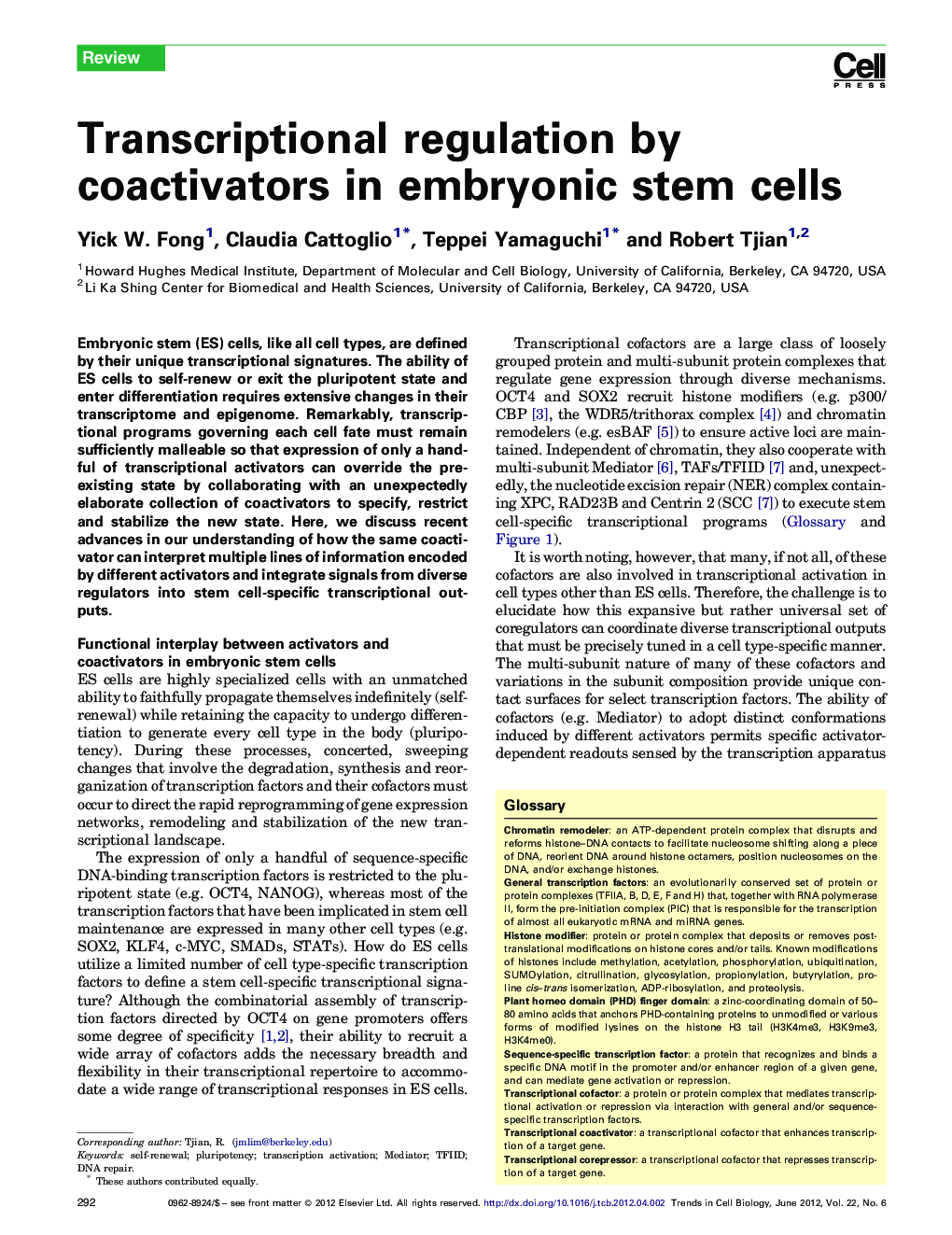| Article ID | Journal | Published Year | Pages | File Type |
|---|---|---|---|---|
| 2204653 | Trends in Cell Biology | 2012 | 7 Pages |
Embryonic stem (ES) cells, like all cell types, are defined by their unique transcriptional signatures. The ability of ES cells to self-renew or exit the pluripotent state and enter differentiation requires extensive changes in their transcriptome and epigenome. Remarkably, transcriptional programs governing each cell fate must remain sufficiently malleable so that expression of only a handful of transcriptional activators can override the pre-existing state by collaborating with an unexpectedly elaborate collection of coactivators to specify, restrict and stabilize the new state. Here, we discuss recent advances in our understanding of how the same coactivator can interpret multiple lines of information encoded by different activators and integrate signals from diverse regulators into stem cell-specific transcriptional outputs.
